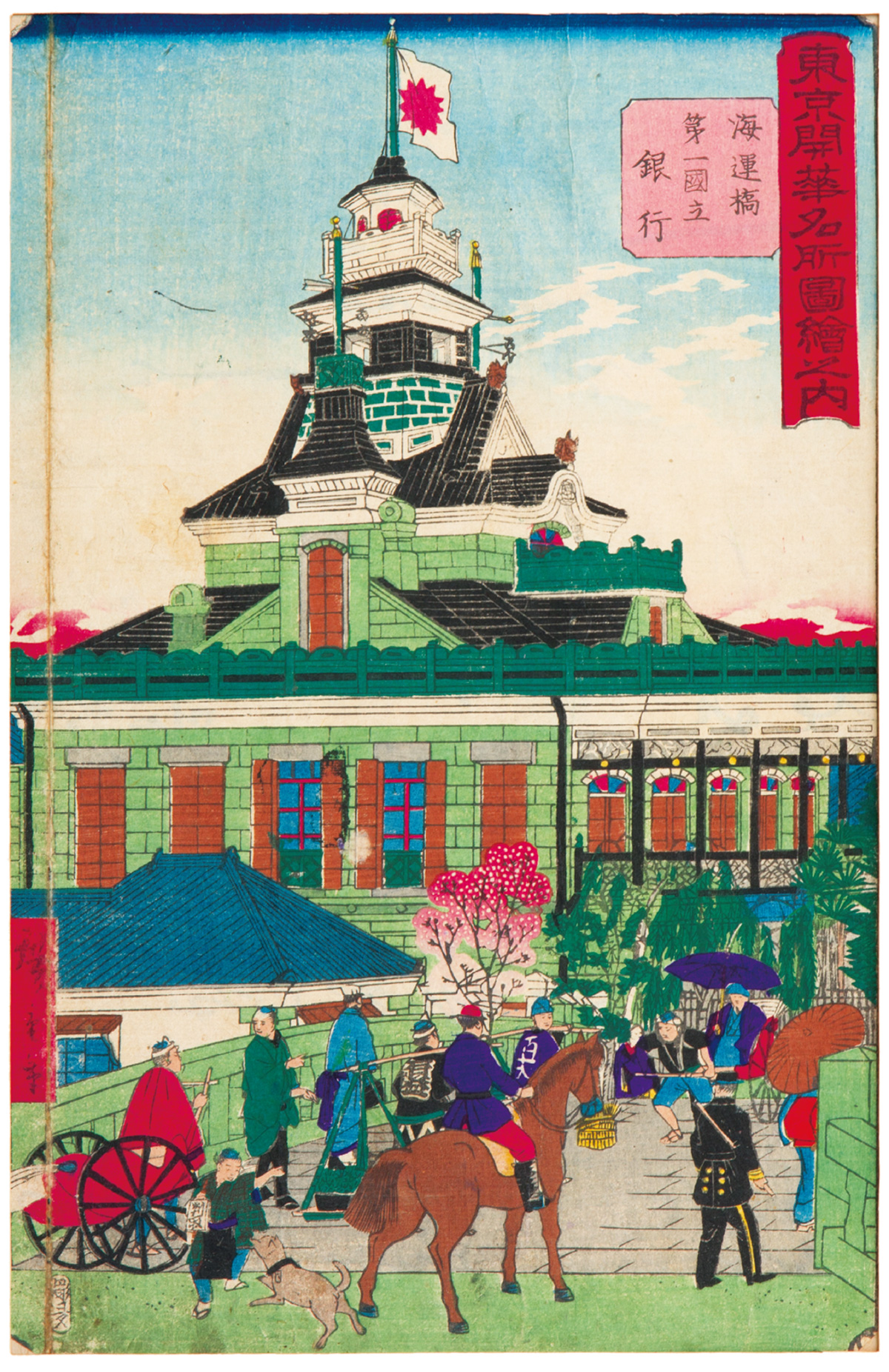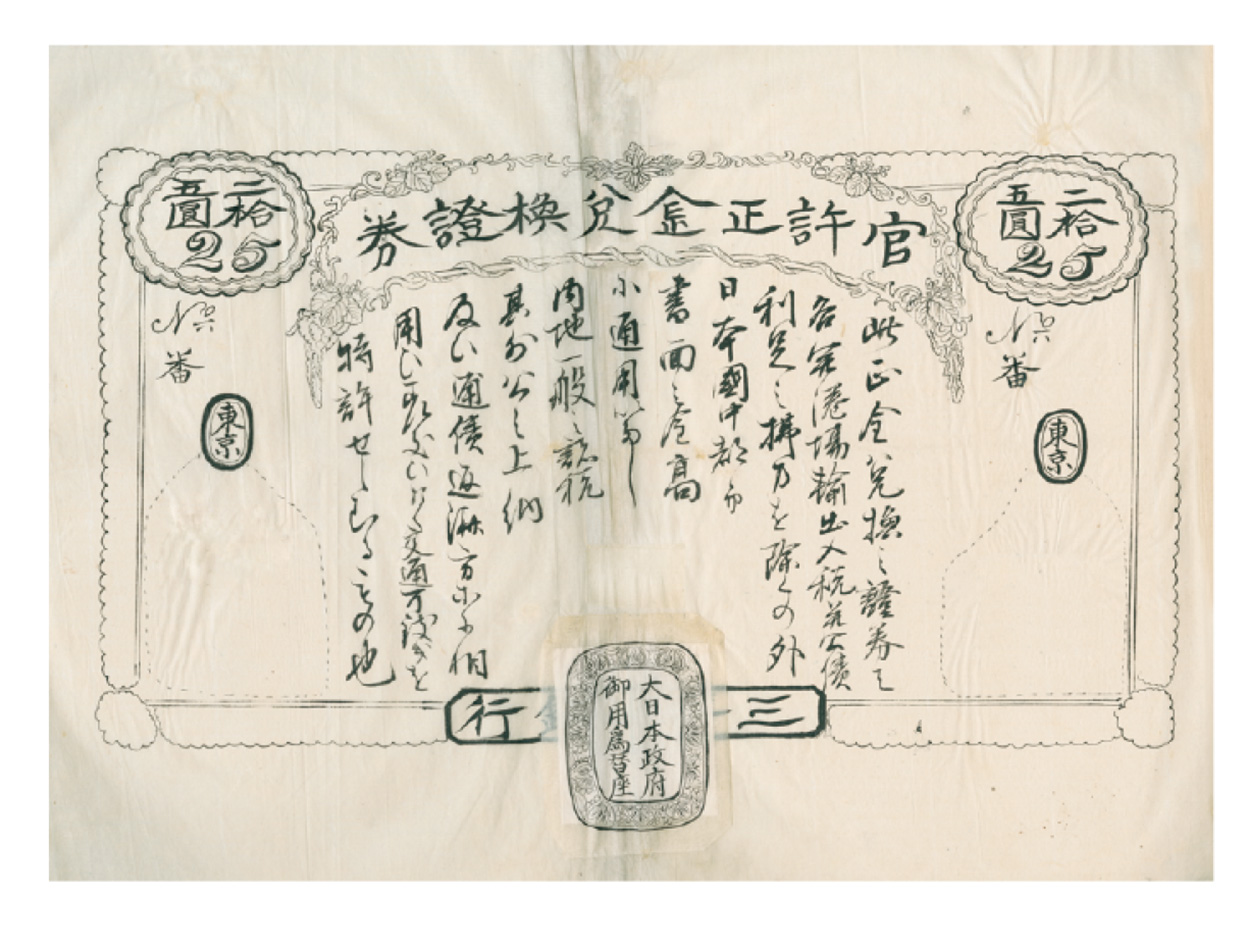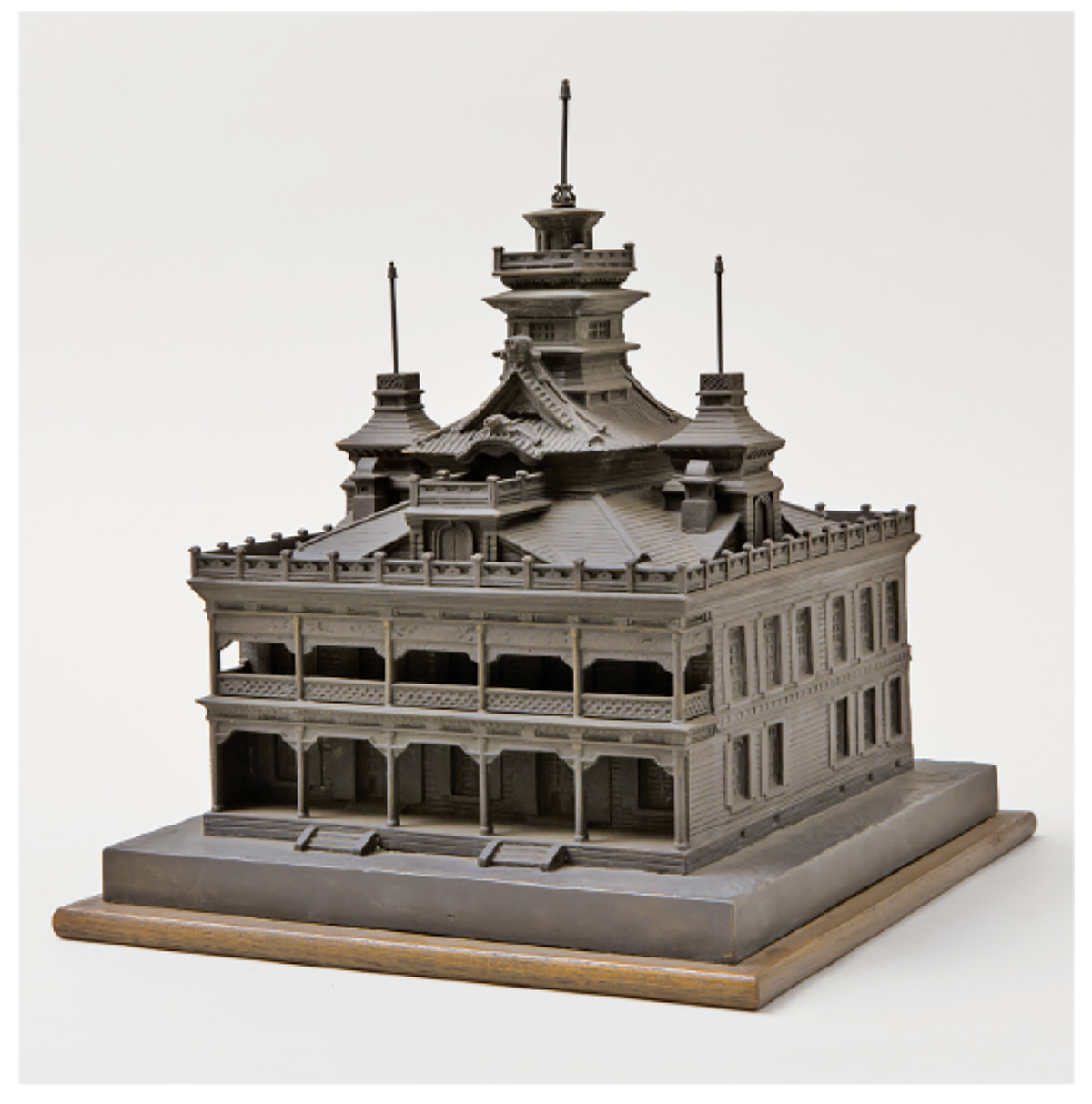25 The Bank of Japan Concept

The New Currency Act
During the early Meiji Era, a wide variety of gold, silver, and copper coins circulated, as well as notes such as those issued by local governments, and Dajokan banknotes, Japan’s first paper currency (→16,23). Moreover, counterfeiting was rampant; the overall situation was one of confusion and disorder. The new government worked to unify the currency, announcing that Dajokan notes would be convertible to new notes and coins until 1872. Furthermore, in May 1871, the government proclaimed a new currency system in denominations of yen, sen, and rin. However, minting the new coinage did not proceed smoothly, forcing the government to divert use of the coins to pay for its rising expenditures. To stabilize the value of the currency, there was a pressing need to collect obsolete notes and coins and retire the Dajokan notes. In this environment, Mitsui deepened its ties with the government to form a new business base in the field of banking.
A “Genuine Bank”
Ministry of Finance leaders Okuma Shigenobu, Inoue Kaoru, and Shibusawa Eiichi introduced the idea of having influential business entities establish Bank of Japan that would issue new notes using new coins as reserves; they envisioned a British-style central bank of issue system. Trusted banknotes, backed by gold, could be issued and circulate in excess of the value of coins minted. Since government funds would increase thereby, it was thought that the economy would benefit. As such, in June 1871, the government granted Mitsui the sole right to exchange new currency for old, and to collect old silver and gold coins. It also ordered Mitsui to work toward the establishment of a “genuine bank.”
Mitsui-gumi Kawaseza
Having received the government’s order, Mitsui began exchanging new currency for old in July 1871, under the name Mitsui-gumi Kawaseza (money exchange office). It also petitioned the government for permission to establish a bank that could issue its own currency. The petition was drafted by Shibusawa, and reflected the government’s intention to place Mitsui at the center of the banking system. The petition was approved a month later, and work began on producing Mitsui notes (→Fig. 25b).
Nevertheless, the plan met with staunch opposition from Ito Hirobumi, and approval was finally withdrawn. Ito insisted that the best way to retire the Dajokan notes would be to adopt the American model and establish a system of national banks (private banks complying with national laws) authorized to issue banknotes. Ultimately, Ito’s position was favored by the majority.
Ministry of Finance Convertible Certificates
As such, the issuance of banknotes by Mitsui-gumi Kawaseza was set aside. Still, the minting of coins continued to lag behind requirements, and in September 1871 the government decided to issue Ministry of Finance convertible certificates (→Fig. 25c), delegating this task to Mitsui-gumi. By putting these certificates into circulation and gradually exchanging them for new coins, the government hoped to manage the problem for the time being. In return for Mitsui-gumi bearing the cost of issuing the certificates and converting them to the new coins, it was allowed to invest 20% of the issue’s face value as it chose, without reserves (new coins) for exchange. This arrangement delivered considerable profit to Mitsui, which had been struggling to cope with a shortage of working capital.
Launching the First National Bank
In 1872, Ministry of Finance leaders Inoue and Shibusawa changed their stance and began urging Mitsui to join with Ono-gumi in funding a new bank. Mitsui and Ono had no choice but to yield to government pressure, and submitted a joint petition for permission to proceed. In agreeing, the government directed the parties to rename the bank the First National Bank, and proceeded to proclaim the National Bank Act. Ministry of Finance cashiering operations were to be handled by the new bank, and the Mitsui-gumi “Kawaseza” name was abolished.
In 1873, the First National Bank commenced operation in Kaiunbashi Mitsui-gumi House (→Fig. 25a). The bank was launched with Mitsui Takayoshi (→24) and Ono Zensuke sharing the duties of president. After Ono-gumi collapsed (→27), Minomura Rizaemon attempted to have Mitsui take over the bank, but these efforts came to nought when in 1875 Shibusawa, having left government, became president of the bank and assumed control of its management. Mitsui was once again proceeding with the establishment of its own bank, despite being at the mercy of government policy, which veered one way, then another.

Meiji Era, by Utagawa Hiroshige III. The print depicts the Mitsui-gumi House, as it was popularly known, in Kaiunbashi (today’s Nihonbashi Kabutocho). The five-story, 873 square-meter building was designed by Shimizu Kisuke II, with construction completed in June 1872. Its height was approximately 26 meters, including the rooftop flag pole.
In 1871, in accordance with government plans, Mitsui began preparing for the establishment of a bank chartered to issue new banknotes. Kaiunbashi Mitsui-gumi House was built to house the offices of the new bank. But due to changing government policy, Mitsui was forced to fund the establishment of the First National Bank in collaboration with Ono-gumi. Moreover, they were pressured to transfer ownership of the building to the bank as soon as it was completed. This new Tokyo landmark was the embodiment of Mitsui’s struggle to find a path through turbulent times.

A draft banknote design submitted to the Ministry of Finance by Mitsui-gumi in July 1871. The note measures 19 by 9 centimeters. If issued, this Mitsui gold certificate would have borne engraved images of Mitsui Takayoshi (Kita) and Takaaki (→24) at bottom left and right respectively.

Mitsui-gumi Kawaseza began issuing Ministry of Finance convertible certificates (also known as Mitsui notes) like this one (10 yen note) in October 1871.

This 1/100 scale model was created in 1930 by architect Horikoshi Saburo. He recreated lost blueprints from photographs of the building and reference materials to build the model.
